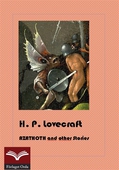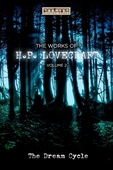
Lägg till önskelistan
Gratis smakprov
- Spara till biblioteket
- Läs smakprov
At the Mountains of Madness e-bok
Pris
39 kr
The story is told in first-person perspective by the geologist William Dyer, a professor at Miskatonic University. He writes to disclose hitherto unknown and closely kept secrets in the hope that he can deter a planned and much publicized scientific expedition to Antarctica. On a previous expedition there, scholars from Miskatonic University led by Dyer discovered fantastic and horrific ruins and a dangerous secret beyond a range of mountains higher than theHimalayas. A smaller advance group ...
E-Bok
39 kr
Pris
Ljudbok
65 kr
Pris
Förlag
Förlaget Orda
Utgiven
28 November 2012
Genrer
Science Fiction, Romaner, Science Fiction & Fantasy, Skönlitteratur
Språk
English
Format
epub
Kopieringsskydd
Vattenmärkt
ISBN
9789174970234
The story is told in first-person perspective by the geologist William Dyer, a professor at Miskatonic University. He writes to disclose hitherto unknown and closely kept secrets in the hope that he can deter a planned and much publicized scientific expedition to Antarctica. On a previous expedition there, scholars from Miskatonic University led by Dyer discovered fantastic and horrific ruins and a dangerous secret beyond a range of mountains higher than theHimalayas. A smaller advance group led by Professor Lake discovered and crossed the mountains and found the remains of 14 ancient life forms, completely unknown to science and unidentifiable as either plants or animals. Six of the specimens are badly damaged and the others uncannily pristine. Their highly evolved features are problematic: their stratum location puts them at a point on the geologic time scale much too early for such features to have naturally evolved yet.
When the main expedition loses contact with Lake's party, Dyer and the rest of his colleagues travel to their last known location to investigate. Lake's camp is devastated, and both the men and the dogs slaughtered, while a man named Gedney and another dog are unaccounted for. Near the camp they find six star-shaped snow mounds, and one specimen buried under each. They discover that the better preserved life forms have vanished, and that some form ofdissection experiment has been done on an unnamed man and a dog. Dyer elects to close off the area from which they took their samples.
Dyer and a graduate student named Danforth fly an airplane over the mountains, which they soon realize are the outer wall of a huge, abandoned stone city of cubes and cones, utterly alien compared with any human architecture. Because of their resemblance to creatures of myth mentioned in the Necronomicon, the builders of this lost civilization are dubbed the "Elder Things". By exploring these fantastic structures, the men are able to learn the history of the Elder Things by interpreting their magnificent hieroglyphic murals: The Elder Things first came to Earth shortly after the Moon was pulled loose from the planet and were the creators of life. They built their cities with the help of "Shoggoths", biological entities created to perform any task, assume any form, and reflect any thought. As more buildings are explored, a fantastic vista opens of the history of races beyond the scope of man's understanding, including the Elder Things' conflicts with the Star-spawn of Cthulhu and the Mi-go who arrived on Earth some time after the Elder Things themselves. The images also reflect a degradation in the order of this civilization, as the Shoggoths gain independence. As more resources are applied to maintaining order, the etchings become haphazard and primitive. The murals also allude to some unnamed evil in an even larger mountain range just past their city which even they fear greatly. Eventually, as Antarctica became uninhabitable even for the Elder Things, they migrated into a large, subterranean ocean.
Dyer and Danforth eventually realize they are not alone in the city. The Elder Things missing from the advance party's camp had somehow returned to life and, after slaughtering the explorers, returned to the city of their origin. Dyer and Danforth discover traces of the Elder Things' earlier exploration, as well as sledges containing the corpses of Gedney and the dog missing from the camp.
As the two progress further into the city, they are ultimately drawn to a massive, ominous entrance which is the opening of a tunnel which they believe leads into the subterranean region described in the murals. Compulsively they are drawn in, finding further horrors: evidence of dead Elder Things killed in a brutal struggle, and blind six-foot-tall penguins wandering around placidly, apparently as livestock for the unknown forms of life which lurked inside the subterranean abyss. They are then confronted w












